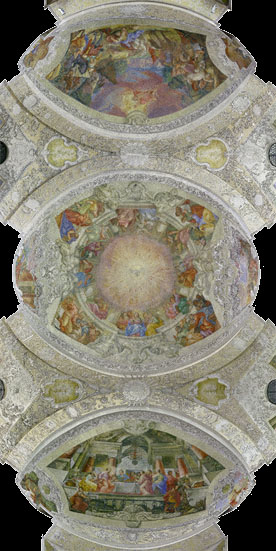Vault Architecture of the Dientzenhofer Family and their Professional Circle in the Context of Applied Geometry and Stereotomy

The Dientzenhofer family of master builders defined the religious architecture of Bohemia and Franconia from the mid-17th to the mid-18th century. They played a key role in the development of baroque spatial concepts and exercised great influence within their professional circle, which comprised prominent architects like Balthasar Neumann. The geometrical basis for the Dientzenhofers’ designs can be found in contemporary stereotomic treatises. New methods of building documentation have opened up new possibilities for performing a thorough analysis and interpretation of the complex geometry of their vaults.
The aim of this doctoral project is to conduct an examination of vault architecture produced by the Dientzenhofer family and members of their circle based on studies of their buildings. In order to decipher the designs, geometrical concepts, and construction principles of these complex structures, the versatile method of 3D laser scanning will be utilised. The point clouds generated by the scanning process provide the basis for a reverse engineering approach. This method promises to produce novel insights into the design and construction of the vaults. Information on the origin of the builders’ knowledge will be gained by comparing the findings with stereotomic treatises by, among others, Guarino Guarini and Johann Jacob Schübler. Light will be shed on the value that these “post-Guarini-esque” vaults can contribute to the field of construction history.
Researcher: Rebecca Erika Schmitt
